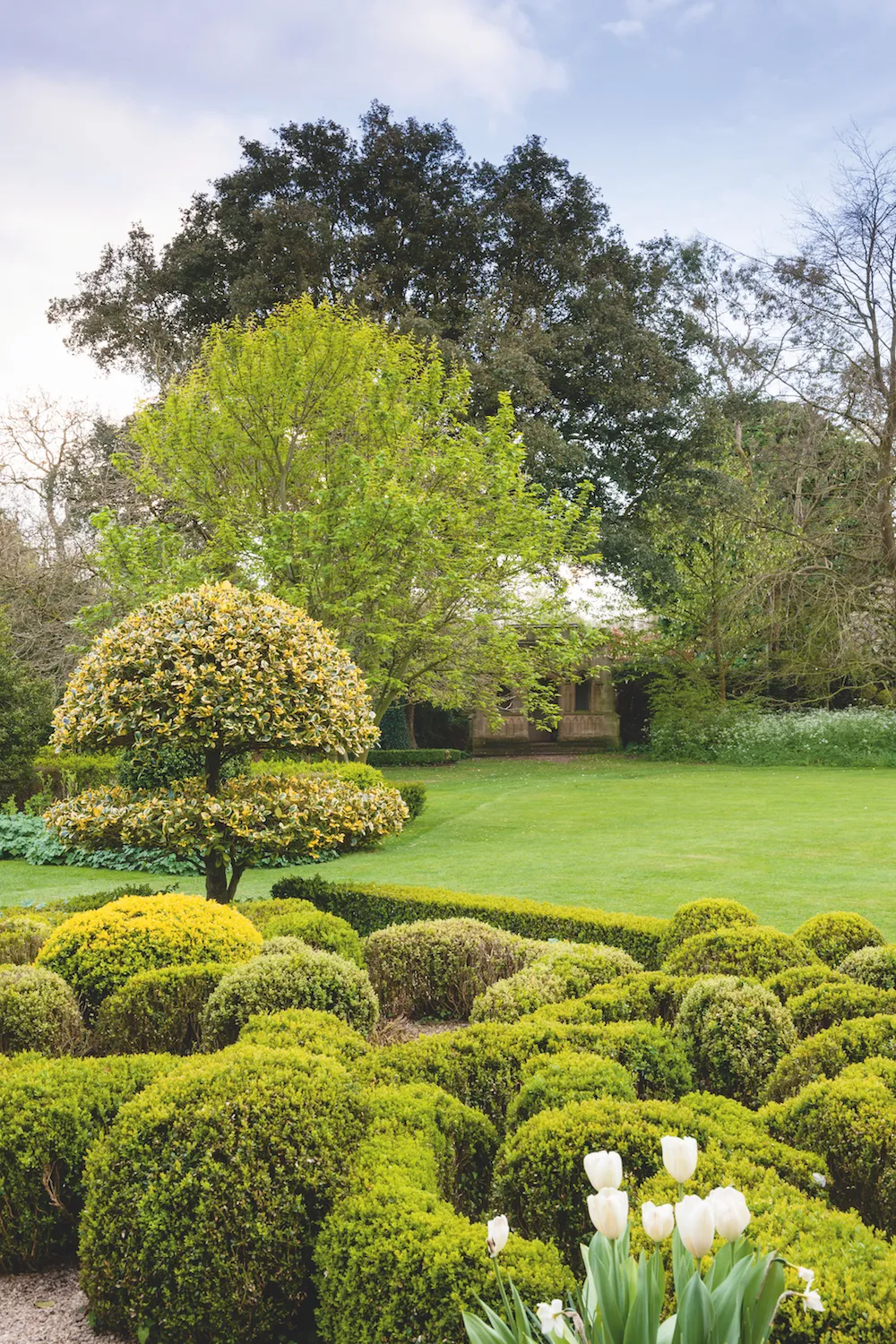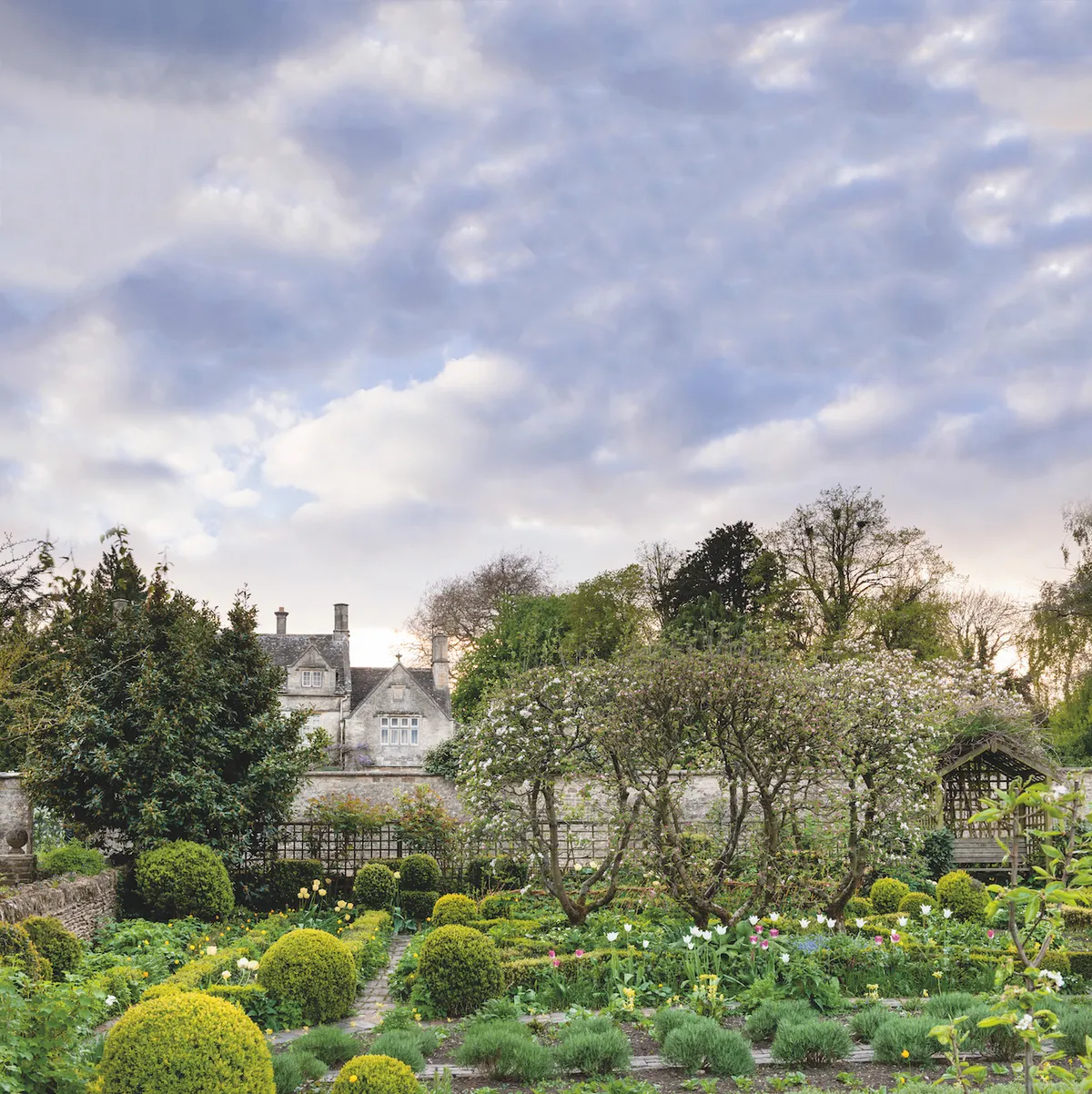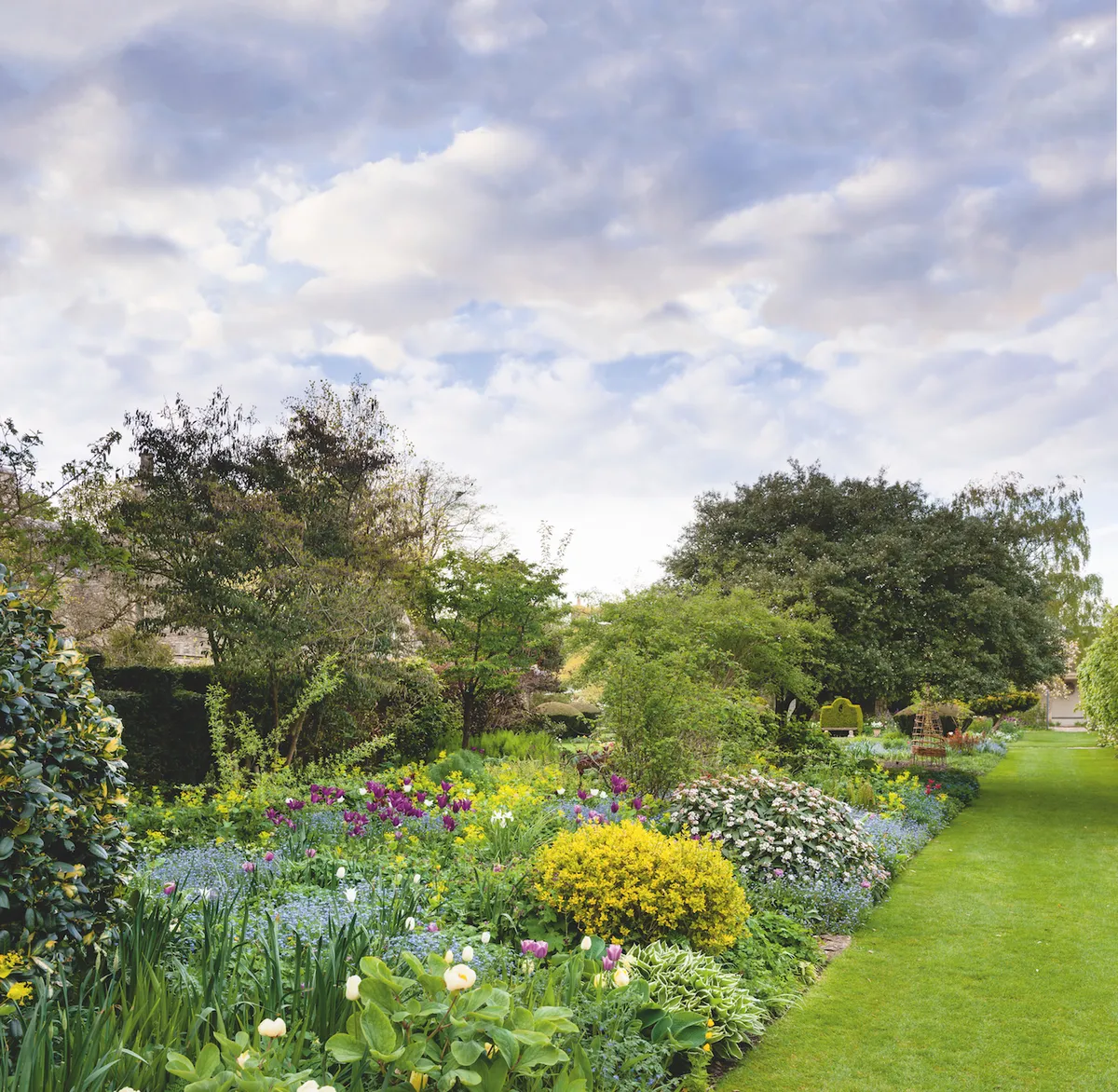Rosemary Verey was an important inspiration for the generation of gardeners who took to their trowels in the 1980s. Her book The Englishwoman’s Garden (1980) was the first she’d written, but it was a huge success and highlighted a very particular kind of English garden, with formal framework, billowing borders, and as many bits of architectural salvage as could be managed.
The book, a collection of essays by garden owners, included one by Rosemary herself, setting out her thoughts on what a good garden should contain. ‘Use must be made of the longest distances to create vistas, to lead the eye on and on. Each area of the garden must merge smoothly into the next, each have different moods and areas of light and shade. The garden must be designed to look inviting even in winter, when evergreens and shapes assume importance. Sweet smelling winter flowering shrubs should be near the house. An element of surprise is essential.’
Few of us now have gardens that can lead the eye ‘on and on’ without bumping into something it would rather not see. But the lessons in that masterly essay are still relevant to anyone making a garden for the first time. We can borrow from Barnsley, as Rosemary herself borrowed. Her famous Laburnum Walk was modelled on one she had seen at Bodnant in north Wales. Alongside a fine stone terrace overlooked by a crenellated verandah, she laid out a knot garden, a clever over-and-under pattern of box, both plain and variegated, interlaced with Teucrium, the design taken from an early book by Gervase Markham. The complex potager that she made in a field adjoining the garden was inspired by a visit to Villandry. The design was taken from a gardening book by William Lawson, first published in 1617. She had a fine library of antiquarian gardening books, collected before anyone else thought they mattered.

KEY ELEMENTS

Vistas
Rosemary Verey always understood the importance of creating long sight-lines in the garden. One of the best at Barnsley connects the famous Laburnum Walk with a lime walk, giving a view all the way through to the classical pavilion by the lily pool.

Clipped evergreens
Rosemary Verey’s book Classic Garden Design (1984) illustrates how much she learned from gardens of the past, with their topiary, knot gardens and box-edged beds. All are incorporated in the Barnsley garden, providing structure and interest even in the depths of winter.

Abundance
The Verey style depended on a formal framework, softened by generous, overflowing planting of old roses and herbaceous perennials. The structure remains intact at Barnsley, but the plants Rosemary Verey used have been joined by dahlias and an abundance of annuals, such as clarkias, tobacco plants, poppies and zinnias.

Simon Verity sculpture
The sculptor Simon Verity is perhaps now best known for the work he did on the west portal of Cathedral of Saint John the Divine in New York, where he was director of carving from 1988-1997. But some of his earliest work was commissioned by Rosemary Verey: the figure of a lady dressed for the hunt, the two stone gardeners who sit either side of the door leading to the potager, and the delicious frog fountain close to the Laburnum Walk.

Potager
There’s no English word that quite matches the French one we still use to describe a mixture of vegetables, fruit and flowers laid out in a formal design. Rosemary Verey introduced and popularised the potager – tunnels hung with courgettes and pumpkins, fruit trees trained in goblets and fans, and box-edged beds of chard and salad crops.

Useful information
Address Barnsley House, Barnsley, Cirencester, Gloucestershire GL7 5EE.
Tel 01285 740000. Web barnsleyhouse.com
Open Barnsley House is now a boutique hotel and one of the nicest ways to see the garden is to take it in with lunch or tea at the hotel. Private tours of the garden are available by arrangement, see website for details. This garden opens as part of the Barnsley Village Festival in May. Head gardener Richard Gatenby occasionally writes about the garden at thegardensatbarnsleyhouse.blogspot.co.uk
Photos by Jason Ingram